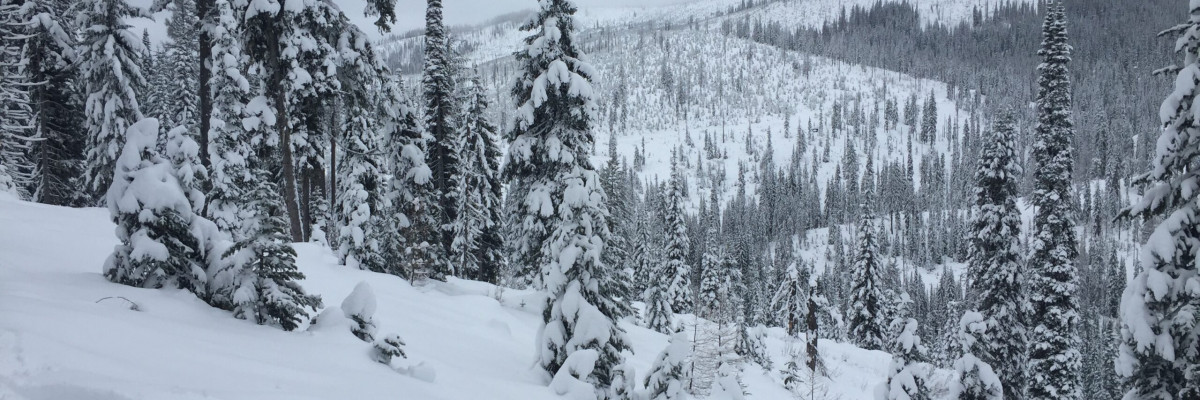The avalanche danger is rated Moderate in the west central Montana backcountry above 7000 feet. Human-triggered avalanches are possible. Evaluate snow and terrain carefully. Heightened avalanche conditions for some specific terrain.
Good morning, this is Travis Craft with the West Central Montana Avalanche Center’s avalanche advisory for December15, 2015. This danger rating does not apply to operating ski areas, expires at midnight tonight (Dec.15) and is the sole responsibility of the U.S. Forest Service.
Weather and Snowpack Discussion
Winds are light out of the northwest in the Bitterroot, Point Six is not reporting this morning. Mountain temperatures are in the upper teen’s and low twenties. The advisory area has received varying amounts of snow, 6 inches in the northern portion and 11 inches in the southern portion since Saturday. This last storm cycle has produced different avalanche problems, they are geographically concentrated from north to south.
Steve and I toured the Lolo Pass Area yesterday and found a snowpack that was well-bonded with rounding basal facets.(pic2) We have had many public observations from the area which have been very useful in showing that the basal facets are rounding and becoming less reactive.
The main avalanche concern is the wind slabs that formed from the accompanying winds with the last storm cycle. We had plenty of snow to be transported, so be aware of those slabs lurking about. These wind slabs are located on leeward terrain. Be looking at ridge lines and be aware of cross loaded slopes too.
The second avalanche problem is that a storm slab has developed throughout the advisory area. This storm slab size varies from 6 inches in the northern range, to 11 inches in the southern range. These slabs should settle out with time and be less sensitive to triggers as the snowpack adjusts to the new load.
The third avalanche concern is our persistent weak layer of buried facets in the bottom of our snowpack. This weak layer is currently rounding in lower elevations.(pic1) It is not as prevalent in the southern area, but still exists in isolated pockets which consist of shallow snowpack or near rocks and outcrops. The northern area has a shallower snowpack and this weak layer is more prevalent.(pit2) Brian was touring in the Rattlesnake yesterday and was able to get this layer to propagate in some of his tests.(pit2) According to public observations, the weak layer has become less reactive (Gash Point, Snake, Public obs Root ). Five Valley’s Backcountry Ski Patrol also sent in observations showing these same results from the central bitterroot.(pit1) The best way to find this layer is by digging down into the snowpack and seeing if it is present and reactive in tests.(pic3) Remember, a stable result in a pit plays a very little part in the avalanche decision making process and an unstable result is the only result one needs for assessment.
Weather and Avalanche Outlook
We are currently between storms. The next storm is forecasted to hit the area starting later tonight and into Wednesday with a storm total of 5-10 inches in the high country. I would expect this to increase the avalanche hazard.
Logan King will issue the next advisory on Thursday, December 17. Remember, if you are out send us a public observation. Ski and ride safe.
























